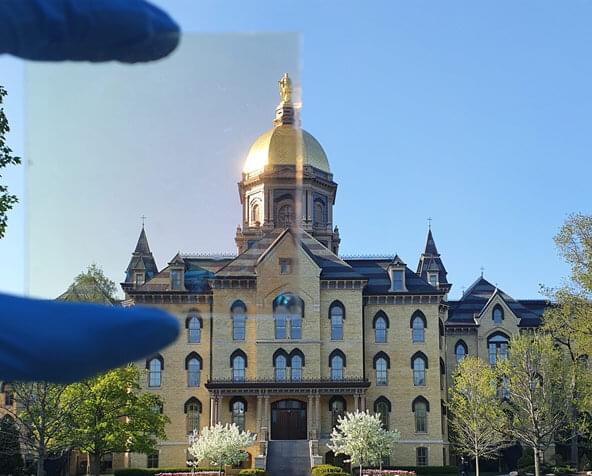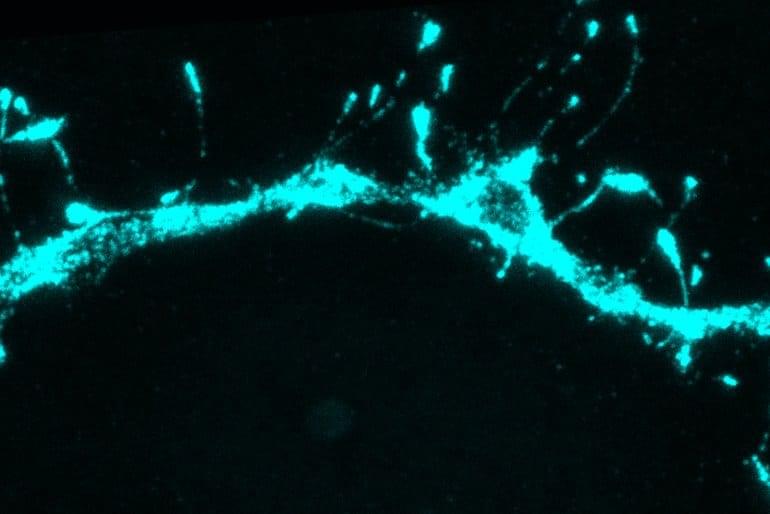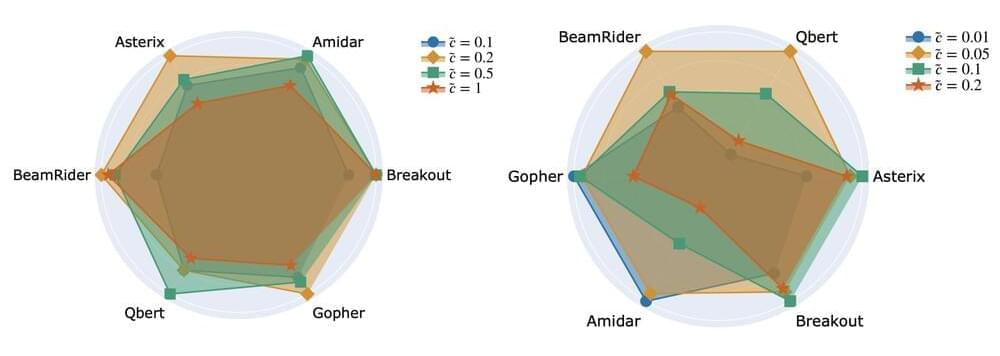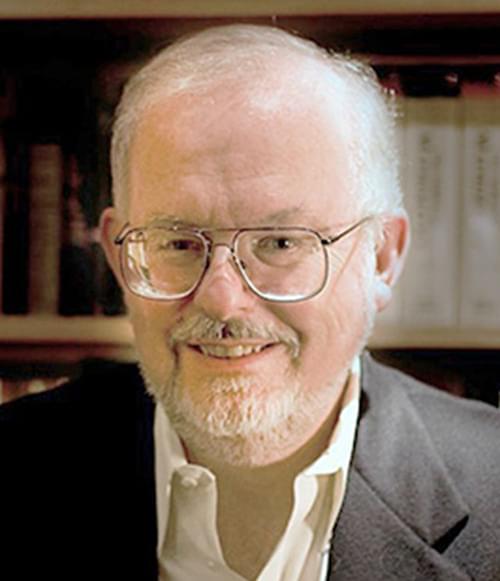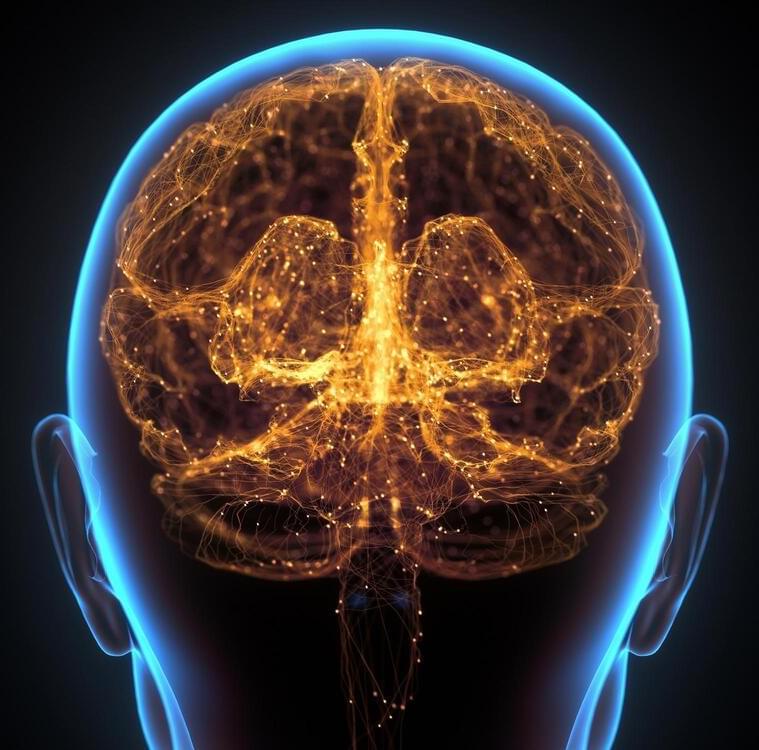Page 4156
Nov 30, 2022
Engineers use quantum computing to develop transparent window coating that blocks heat, saves energy
Posted by Paul Battista in categories: climatology, computing, quantum physics
Cooling accounts for about 15 percent of global energy consumption. Conventional clear windows allow the sun to heat up interior spaces, which energy-guzzling air-conditioners must then cool down. But what if a window could help cool the room, use no energy and preserve the view?
Tengfei Luo, the Dorini Family Professor of Energy Studies at the University of Notre Dame, and postdoctoral associate Seongmin Kim have devised a transparent coating for windows that does just that.
The coating, or transparent radiative cooler (TRC), allows visible light to come in and keeps other heat-producing light out. The researchers estimate that this invention can reduce electric cooling costs by one-third in hot climates compared to conventional glass windows.
Nov 30, 2022
Eye implant made from pig skin reverses blindness in 14 people
Posted by Raphael Ramos in category: futurism
Using collagen from pig skin, Swedish researchers created an artificial cornea that reversed blindness in 14 people.
Nov 30, 2022
Black hole simulated in lab began glowing
Posted by Paul Battista in categories: cosmology, physics
Physicists have simulated a black hole in a lab. Then it started glowing.
This allowed the team to realise that their black hole analogue may help explain so-called “Hawking radiation”, theorised to be emitted by black holes in nature.
Their analysis of the black hole in a bottle is presented in a paper published in the Physical Review Research journal.
Nov 30, 2022
Amazon debuts a fully autonomous warehouse robot
Posted by Quinn Sena in categories: biotech/medical, employment, robotics/AI, space
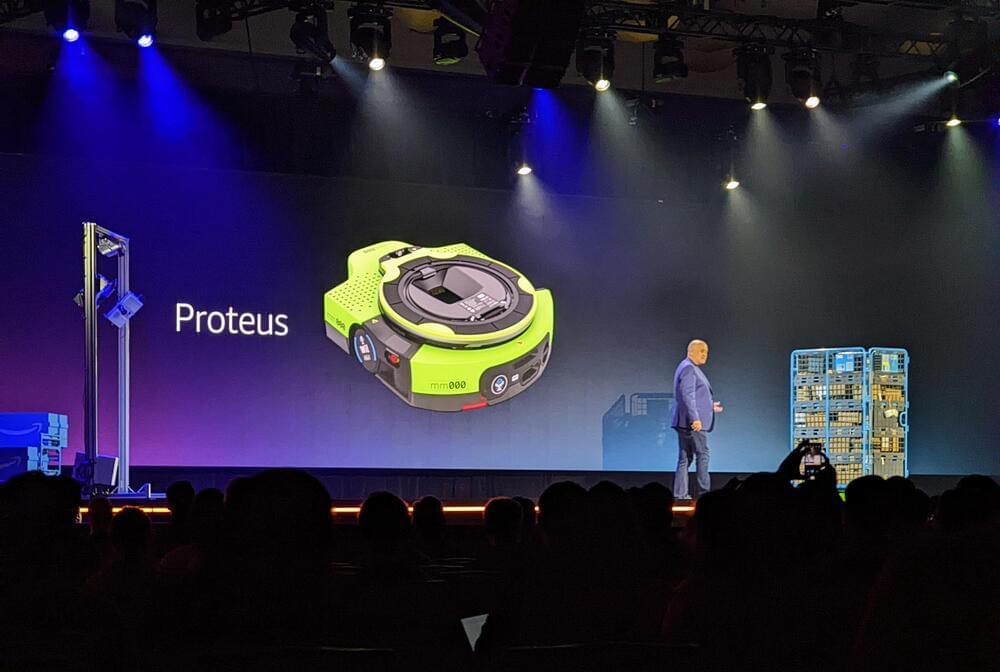
You can’t discuss fulfillment robots without mentioning Amazon. Over the past decade, the retail juggernaut has become the 800-pound gorilla in the category, courtesy of several key acquisitions and seemingly endless resources. And while warehouse robotics and automation have been accelerated amid the pandemic and resulting employment crunch, Amazon Robotics has been driving these categories for years now.
This week at its annual Re: Mars conference in Las Vegas, the company celebrated a decade of its robotics division, which was effectively born with its acquisition of Kiva Systems. Over the course of its life, Amazon Robotics has deployed more than 520,000 robotic drive units, across its fulfillment and sort centers. From the outside, it’s been a tremendous success in the company’s push toward same-and next-day package delivery, and its driven the competition to look for their own third-party robotics solutions, bolstering startups like Locus, Fetch and Berkshire Grey.
Nov 30, 2022
Silent Synapses Are Abundant in the Adult Brain
Posted by Jose Ruben Rodriguez Fuentes in category: neuroscience
Summary: The adult brain contains millions of “silent synapses”, or immature connections between neurons that remain inactive until they are required for learning new information and storing new memories.
Source: MIT
MIT neuroscientists have discovered that the adult brain contains millions of “silent synapses” — immature connections between neurons that remain inactive until they’re recruited to help form new memories.
Nov 30, 2022
In reinforcement learning, slower networks can learn faster
Posted by Dan Kummer in categories: entertainment, information science
We then tested the new algorithms, called DQN with Proximal updates (or DQN Pro) and Rainbow Pro on a standard set of 55 Atari games. We can see from the graph of the results that the Pro agents overperform their counterparts; the basic DQN agent is able to obtain human-level performance after 120 million interactions with the environment (frames); and Rainbow Pro achieves a 40% relative improvement over the original Rainbow agent.
Further, to ensure that proximal updates do in fact result in smoother and slower parameter changes, we measure the norm differences between consecutive DQN solutions. We expect the magnitude of our updates to be smaller when using proximal updates. In the graphs below, we confirm this expectation on the four different Atari games tested.
Overall, our empirical and theoretical results support the claim that when optimizing for a new solution in deep RL, it is beneficial for the optimizer to gravitate toward the previous solution. More importantly, we see that simple improvements in deep-RL optimization can lead to significant positive gains in the agent’s performance. We take this as evidence that further exploration of optimization algorithms in deep RL would be fruitful.
Greg was Consulting Judge for our.
Lifeboat to the Stars award and he contributed to Lifeboat Foundation’s Visions of the Future which reached #1 under “Hot New Releases in Science Fiction Anthologies” on Amazon. As an accomplished science fiction author of over 50 novels, Greg received five Nebula Awards and two Hugo Awards. He even.
Helped the government prepare for attacks of the future, working with our Arlan Andrews and Jerry Pournelle.
Nov 30, 2022
Breakthrough wormhole simulation may unite quantum physics and general relativity
Posted by Paul Battista in categories: cosmology, quantum physics
The breakthrough could suggest a way to study ‘quantum gravity,’ the missing link between quantum physics and Einstein’s general relativity in the lab.
Nov 30, 2022
Autism Breakthrough: New Treatment Significantly Improves Social Skills and Brain Function
Posted by Paul Battista in categories: innovation, neuroscience
The treatment caused neurological changes, including a decrease in inflammation and an increase in functionality, according to the researchers.
A recent Tel Aviv University study found that pressure chamber therapy greatly improved social skills and the condition of the autistic brain. The research was carried out on autism animal models. The researchers discovered changes in the brain, including a decrease in neuroinflammation, which has been linked to autism. Furthermore, the social functioning of the animal models treated in the pressure chamber improved significantly. The success of the research has significant implications for the applicability and understanding of pressure chamber therapy as a treatment for autism.
Inbar Fischer, a Ph.D. student in Dr. Boaz Barak’s lab at Tel Aviv University’s Sagol School of Neuroscience and School of Psychological Sciences, led the team that made the discovery. The findings were recently published in the International Journal of Molecular Sciences.

